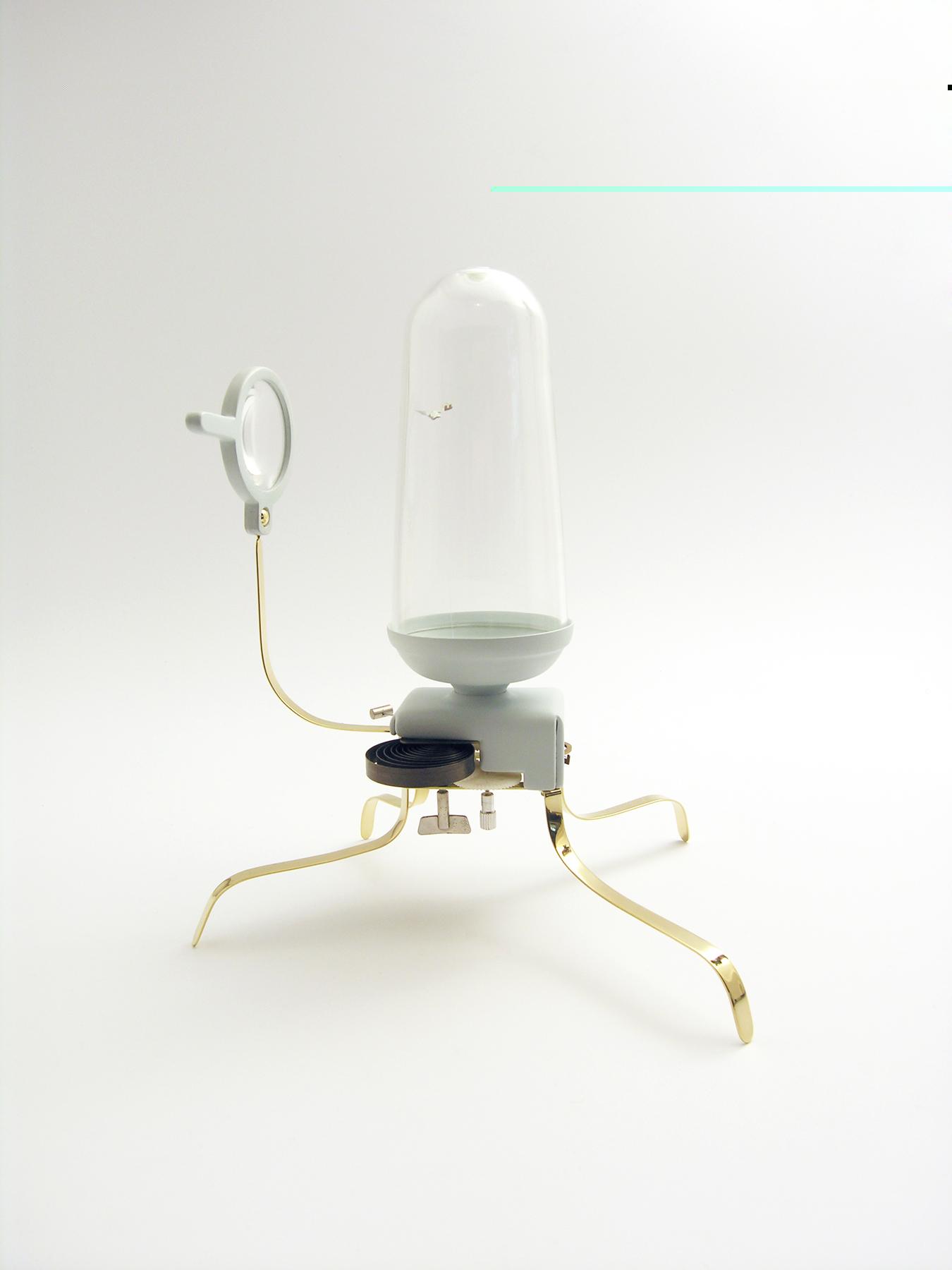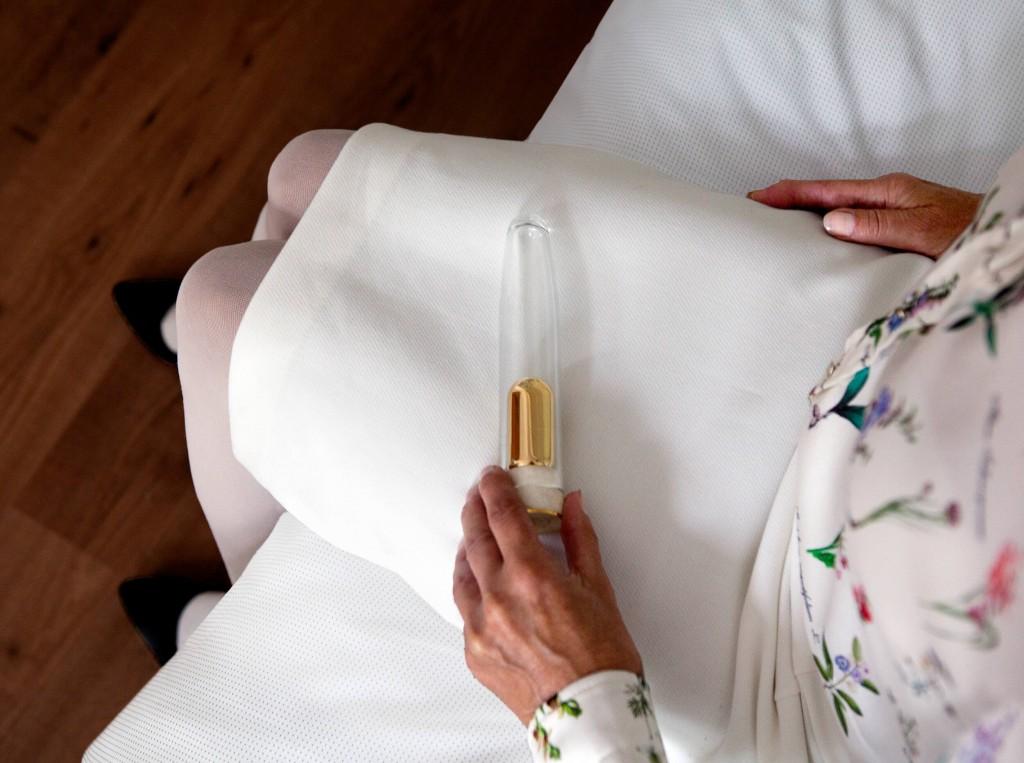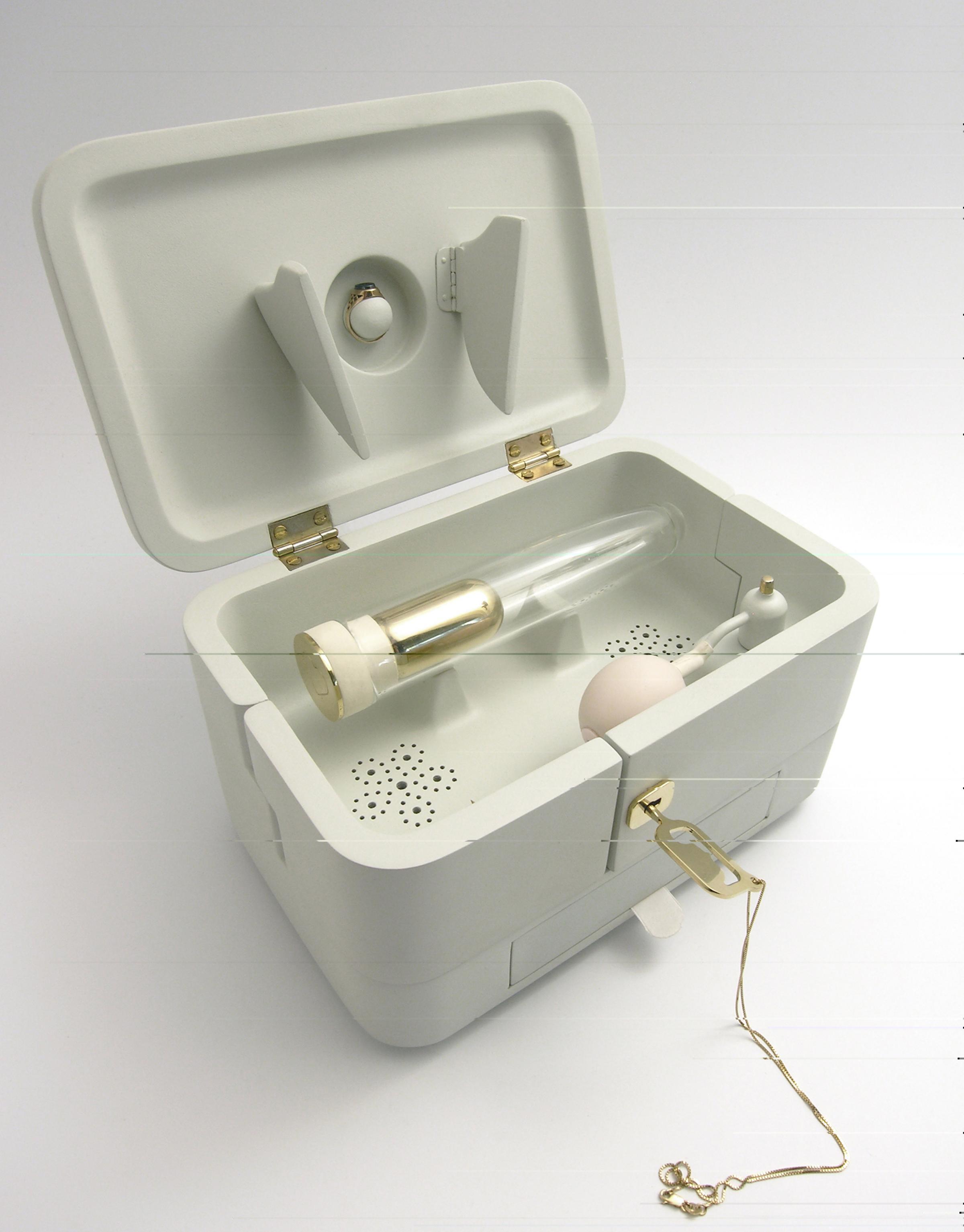Mark Sturkenboom


Project
Watching time fly by,
illustrates a new way of experiencing time.
This table-clock doesn’t show you what time it is but allows one to see the passing of time..
In the glass shell there is a fly, made out of a 500 euro bill,
that flies exactly one round each minute.
It is actually possible to see time flying by. Pablo Picasso already told us;
‘What one can imagine is by definition part of reality’
--
21 Grams,
In a time where we are able to manipulate life, adjust the way that we look, where the possibilities are endless if it comes to body enhancements, there is one thing we still cannot answer, the unavoidable passing of life. Or can we? 21 Grams is a memory-box that allows a widow to go back to the intimate memories of a lost beloved one. After a passing, the missing of intimacy with that person is only one aspect of the pain and grieve. This forms the base for 21 Grams. The urn offers the possibility to conserve 21 grams of ashes of the diseased and displays an immortal desire. By bringing different nostalgic moments together like the scent of his perfume, ‘their’ music, reviving the moment he gave her her first ring opens a window to go back to moments of love and intimacy. She is able to have an intimate night with her sweetheart again. The cabinet functions also as an acoustic amplifier. In the back of the cabinet there is room for an iPhone, the music plays through the ‘forget me not’ flowers on the inside of the cabinet. The key to this cabinet is also a collier. So that she is the only one who can access the cabinet. 21 Grams is not only a way to tempt a person to revive an intimate night but displays an accusation against the unavoidable passing of life.








Over
Mark Sturkenboom (Driebergen, 1983)
Sturkenboom was formerly a welder before graduating with honors in 2012 at Artez,
Institute for the Arts in Arnhem. The core of his work is design,
a word that can mean a great deal of different things depending on the time,
place and context that one chooses to view it in.
The Oxford English Dictionary defines design as:
“Purpose, planning, or intention that exists or is thought to exist behind an action, fact, or material object” Sturkenboom creates purposeful, intentional objects. His work is drawn from the miasma of dreams, the fragility of the contemporary world, fragments of memories.
His work organizes an impossible ephemera.
It delivers absolute statements through fierce intention, careful planning, and a purposeful energy that proliferates in his will to express. Throughout all of this Sturkenboom manages to balance a visual cadence between the absurd and a sharp sense of humor.
He welcomes the viewer to casually slip into his conceptual narrative.
Memory is prevalent in his line of work, throughout his entire oeuvre is the ability to preserve a
moment in a state of crystal clarity. Memory is messy, it is flavored by myriad personal influences.
Memory changes, morphing with age and experience,
fading into personal fictions, diluting into deep well of life’s experience.
Sturkenboom works against the entropic process, realizing his ideas with clean lines,
a sensitive palette, careful mechanisms that resist the temptation of clutter and confusion.
He realizes single memories with exacting intention.
Lets take one example: We, as a culture fear death, and we do our best not to think of it.
Sturkenboom’s work 21 Grams drives us to consider it. But this consideration is faceted,
it contains within it a breadth of sentiments.
More contemplative than it is macabre, more playful than it is perverse.
21 Grams, like a prism, refracts an emotional muddle into distinct perspectives of personal perspective.
Lets take another example: We, as a culture, are enamored by objects – perfect objects, glossy devices that fit in our pockets, perfect forms created in organized environments.
Physical human beauty is always cruel because it will absolutely disappear.
Manufacture is comfortable because it always yields the same result.
These are the cruxes of the work of Sturkenboom, he resists manufacture, he embraces material.
He is present in all of his works, regardless if they are created by him or executed by skilled professionals. His work exceeds function, pulling the viewer into the orbit of the identification, sensation, and emotion.
He does this by employing materials such as glass, gold, ceramic, and leather.
Sturkenboom communicates on a visceral level.
Sturkenboom weaves together histories, he composites the living memory with the permanence of genuine mediums.
He offers the everlasting object, the coalesced memory, balanced with the fragility of human experience.
Text by Adam Grinovich